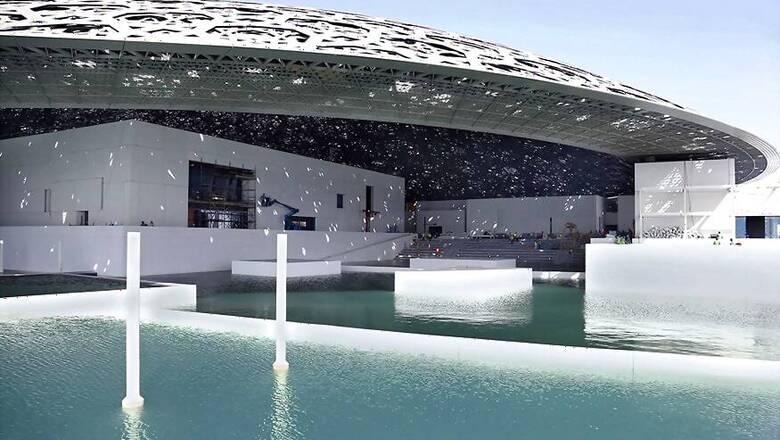
views
More than a decade in the making, the Louvre Abu Dhabi opens its doors this week, bringing the famed name to the Arab world for the first time.
French President Emmanuel Macron is set to attend the Wednesday inauguration on his first visit to the United Arab Emirates since taking office in May.
For the next 10 years, 13 of France's top museums will lend works to the UAE at their discretion and for a maximum of two years each.
The museum currently has some 300 pieces on loan, including an 1887 self-portrait by Vincent van Gogh and Leonardo da Vinci's "La Belle Ferronniere".
The oil-rich emirate, which has made no secret of its push on soft power, has also spent years quietly building its own permanent collection.
The Louvre Abu Dhabi is displaying more than 250 works of art from the Emirati collection, including Edouard Manet's "The Gypsy" and works by Dutch abstract artist Piet Mondrian and Turkey's Osman Hamdi Bey.
'More universal than Louvre'
The UAE government is promoting the museum as the first of its kind, a 23-gallery "museum city in the sea" on Saadiyat Island off the Abu Dhabi coast.
Some five percent of the museum is dedicated to contemporary and modern art, including a monumental piece by China's Ai Weiwei.
The main focus, however, is on world history and religions.
Among the exhibits are a sixth century Koran, a gothic Bible and a Yemeni Torah facing each other, open at verses carrying the same message.
Jack Lang, who was France's culture minister when the Louvre in Paris received its controversial pyramid, said the Abu Dhabi museum would be "much more universal than the Louvre in Paris".
"It is a chance to open the idea of a museum to different continents and different civilisations," he said.
"It joins the art of the Louvre (and) the Musee d'Orsay, in a space that is much more open and less separated."
The opening comes a decade after France and the UAE agreed to a 30-year partnership initially reported to be worth $1.1 billion, including nearly half a billion dollars for the rights to the Louvre brand alone.
Emirati and French officials declined to disclose the final cost of the project.
The museum design, by France's Pritzker Prize-winning architect Jean Nouvel, conjures up the image of an Arab medina as seen through the eyes of a contemporary cinematographer.
A silver-toned dome with perforated arabesque patterns appears to float over the white museum galleries, creating what Nouvel describes as a "rain of light".
To reach the ground, each ray of light must cross eight layers of perforations, creating a constantly shifting pattern that mimics the shadows cast by palm trees or the roof of a traditional Arab market.
Climate control, counter-terrorism
Authorities have taken serious measures to protect the art from the heat during transport and storage, in a country where summer temperatures soar well above 40 degrees Celsius (more than 100 degrees Fahrenheit).
The art is also guarded by Emirati forces in coordination with French experts including civil defence and terrorism security forces.
The museum initially sparked heated debate in France, where criticism erupted in the early years of the project over the sale of a French name to an Arab state.
Questions of labour rights have also hung over the project, linked to the overall status of migrant workers in the Gulf.
Notably, Human Rights Watch has raised the alarm around conditions for migrant workers employed to build the museum.
It documented rights violations connected with the museum in 2015, after the UAE introduced improved labour rights laws.
The Louvre Abu Dhabi is the first of three museums to open its doors to the public on Saadiyat Island, where the UAE plans to launch the Guggenheim Abu Dhabi, designed by Frank Gehry, and the Norman Foster-designed Zayed National Museum.
A spokesperson for the Guggenheim in New York said a contractor had not yet been selected for the Guggenheim Abu Dhabi and that construction was still on hold.
















Comments
0 comment